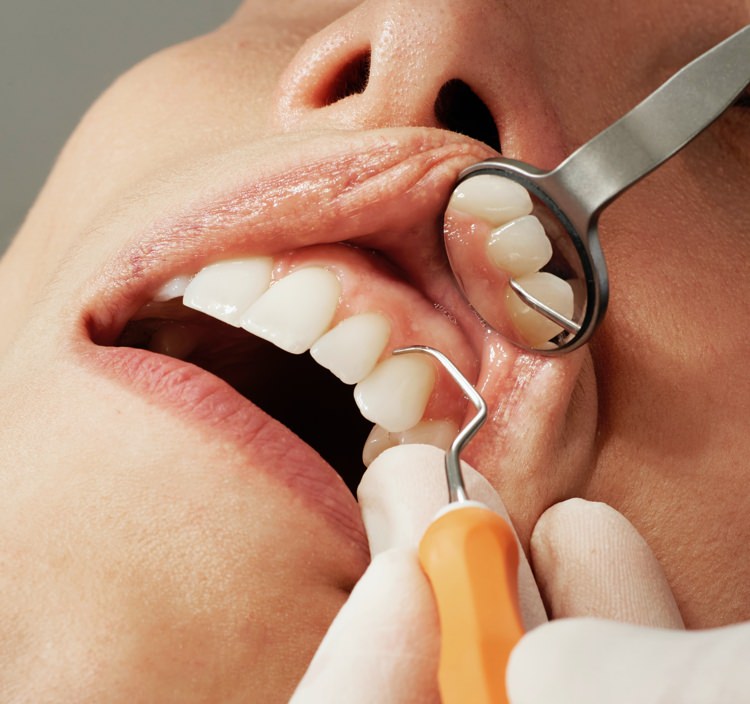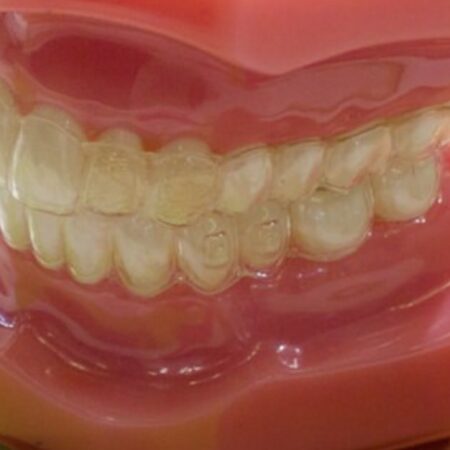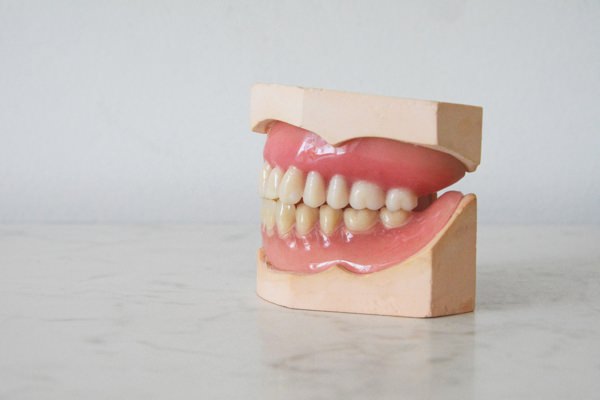Why Do 80% Of Patients Have Gum Disease After Dental Care, and How Does It Impact Your Overall Health?
 This article highlights the causal relationship between gum disease bacteria and systemic disease, and why 80% of patients have gum disease (bleeding gums). It also covers a simple, inexpensive, predictable even guaranteed treatment results that are obtained if the OraVital System is implemented.
This article highlights the causal relationship between gum disease bacteria and systemic disease, and why 80% of patients have gum disease (bleeding gums). It also covers a simple, inexpensive, predictable even guaranteed treatment results that are obtained if the OraVital System is implemented.
Here’s a statistic: 80% of people have gum disease which is defined as tissue that bleeds when touched despite dentistry’s best efforts.
This means the existing treatments and recommendations suggested do not work! In fact, if you follow these recommendations it may actually cause harm to patients by delaying more effective care.
Key Sections in This Document
- The COVID-19 and Gum Disease Connection
- The Mouth/COVID Connection
- The Mouth/Atherosclerosis Connection
- Educating Our Patients
- Individual Patient Responses Matter
- Oravital: a System to Predictably Treat Periodontal Disease and Halitosis
- Kill the Pathogens Causing the Local and Systemic Effects
The COVID-19 and Gum Disease Connection
In COVID-19 and gum disease, the same ACE2 receptor is attacked which creates an inflammatory cascade. This points towards a possible association between periodontitis and COVID-19, where several cytokine enzymes expressed in both diseases are regulated by this receptor.
ACE2 is a protein on the surface of many cell types. It is an enzyme that generates small proteins – by cutting up the larger protein angiotensinogen – that then go on to regulate functions in the cell. [source]
These enzymes contribute to the whole-body inflammation that creates worsening outcomes for COVID-19 patients with gum disease.
The Mouth/COVID Connection
The impact of a connection between periodontal treatment, IL-6 levels (an inflammatory molecule), respiratory conditions and COVID-19, can be powerful considering the high prevalence of periodontal disease in adults; the high transmission rate of SARS-CoV-2; the limited access to periodontal treatment during the pandemic and the shortage of health care resources related to hospitalized COVID-19 patients who require mechanical ventilation.
The Mouth/Atherosclerosis Connection
Dr. Bale and Dr. Doneen state “high risk periodontal pathogens cause atherosclerosis”. The body’s reaction to them creates the triad of conditions that causes atherosclerosis. Dr. Bale says that his research shows that 50% of heart attacks are caused by these periodontal pathogens.
The Mouth/Alzheimer’s Connection
Dr Miklossy states “Alzheimer’s is a neurospirochetosis (caused by one of five oral spirochetes found with gum disease in neural/brain tissue) with 93.7% of Alzheimer’s patients having oral spirochetes in the brain tissues on autopsy.”
Spirochetes cause syphilis and Lyme disease, producing similar neurological conditions as Alzheimer’s. If these spirochetes could be killed, then Alzheimer’s could be prevented. The OraVital antibiotic rinse targets these bacteria.
How does gum disease affect overall health if you have COVID – 19, atherosclerosis and Alzheimer’s? When gums bleed, bacteria gain entrance into your blood vessels and tissues. They look for sites to breed throughout the body by direct invasion, potentially 24/7/365. The pathogens also stimulate the immune system to produce inflammatory products that create inflammation and tissue damage, while allowing more pathogens to reproduce. Inflammation worsens the outcomes for Alzheimer’s, COVID and periodontal disease.
Educating Our Patients
To control periodontal disease, we need to educate our patients on how:to:
- disturb and disrupt the gum biofilms effectively
- create shallow pockets they can cleanse
- test for these pathogens when indicated
- prescribe an antibiotic particulate rinse to kill the pathogens under the gum, on the tongue, and in the throat/tonsillar areas.
Treating the gums alone does not and has not worked for over 100 years.
Individual Patient Responses Matter
To acquire gum disease you need gums, and the bacteria which create a reaction with the patient’s immune system dependent to the individual patient’s response to the bacteria. Take a look for the words gum and bacteria in the following recommendations which we give to patients to prevent gum disease.
To control gum disease caused by bacteria we recommend:
- Brush your teeth. This is the wrong. One needs to brush the sulcus (gap between the gum and tooth) so the gum cleaning removes biofilm from the tooth and gum. If you brush your teeth you do not brush the gums where the infection is located. Brushing your teeth alone contributes to gum disease.
- Floss your teeth. The tooth is inorganic and has its own biofilm. The gum is organic and has a different biofilm. Both must be disturbed for health. There is a gap between the tooth and gum wider than floss so the floss can not physically touch the gum and tooth at the same time. When you floss you push biofilm beneath the gum below where you can not remove it with floss. You can floss the tooth because it is convex. You can not floss the inside of a bowl which is the shape of the gum tissue surrounding/between the teeth. Floss is unable to physically remove gingival biofilms. Rather use Soft-Picks to push firmly against the gum AND tooth to remove the gum and tooth biofilm easily at the same time. On the third day swollen tissues shrink and tissues stop bleeding guaranteed.
- Clean your teeth. Bacteria causes the infection. Cleaning teeth disturbs the biofilm. It does not remove it from the mouth NOR kill bacteria. In fact, it can cause gum disease to spread because infected scalers can seed infection in healthy tissues. So, cleaning your teeth delays the progress of the disease but does not prevent it. There is not one published study to show that cleaning teeth ALONE prevents gum disease.
Dental professionals do not routinely recommend bacterial testing for the pathogenic bacteria, nor recommend oral antibiotics because “they do not work for all gum diseases”. True and true. If you have bleeding and medical/dental risks, testing for the pathogens with BiofilmDNA is indicated. If a particulate antibiotic rinse is selected vs oral antibiotics to target the pathogens present, then one gets 3-4 times the minimum inhibitory concentration to penetrate all whole mouth biofilms unlike oral antibiotics. Rinses are superior to oral antibiotics. See article attached “Treatment of oral malodor and periodontal disease using an antibiotic rinse“.
The things we tell patients to do, do not work predictably. Now we know why 80% of our patients have Periodontal Disease. Change is needed especially in this COVID era. Using the OraVital system can control gum disease in four weeks in addition to the therapies we now recommend. The results are predictable and guaranteed. With the oral systemic link so important in the COVID-19 era, it is time for dental professionals to adopt new scientifically proven methods to restore our patients oral and systemic health.
What happens if you follow the OraVital System and have the recommended dental care? The gum disease for 90% of patients predictably goes away in four weeks. If you remove the bacteria and keep it away, the disease is controlled by the patient vs the procedures. Stomach ulcers are now controlled using the same principles. We can cure cancer and ear/bladder/chest infections. Not everyone is allergic to peanut butter. If you were, you do not leave peanut butter in the house ever! Dental care leaves the bacteria (peanut butter) in the mouth and then treat the symptoms.
Two Key Facts:
- The same bacteria causes periodontal disease and breath odour/halitosis. They are spread by saliva and transferred by kissing, sharing food etc./ If you have bleeding gums do not kiss.
- There is a 10% reduction in deaths from pneumonia in nursing homes if the gums are brushed 3 times a week—not a day. The periodontal pathogens contribute to the death from pneumonia. Gum disease is not a little infection or bleeding, but a life threatening/altering condition.
Oravital: a System to Predictably Treat Periodontal Disease and Halitosis
Review the medical history to discover medical conditions that are affected by periodontal pathogens. (CVD, HBP, stroke, diabetes, kidney disease, adverse pregnancy outcomes, cancers, RA arthritis etc). If they exist look for signs of periodontal disease closely.
- Look at family and personal medical, and dental history. Periodontal disease is spread by kissing/feeding infants and is passed usually through the mother. It can appear to be a genetic issue but is really a vertical transmission issue until saliva is exchange with strangers.
- Look for active periodontal disease not periodontal disease that has occurred. There should be no visible biofilm or disclosing on every hygiene visit. If there is, review biofilm control by putting the brush in the patient’s hand and together remove all biofilm.
- Use Soft-Picks to press firmly between the gum and tooth to do a Papillary Bleeding Score. The gums should never bleed or hurt. The Soft-Picks must exert pressure or switch to a larger tool. On the third day, the bleeding and soreness will stop guaranteed.
- Measure the space between the gum and tooth. It should be 3mm or less after care.
- Count the number of Bleeding On Probing points. It should be 10mm or less.
To transform the biofilm, you need to test for pathogens if there are indications of risk:
- Medical/dental concerns
- Bleeding
- pockets
- halitosis
BiofilmDNA checks for 6 periodontal pathogens, yeast, S mutans, and cavity causing bacteria. Then a recommended antibiotic/fungal is prescribed in addition to traditional care to kill the pathogens identified.
Kill the Pathogens Causing the Local and Systemic Effects
We use antibiotics for ear/bladder/chest infections, but not routinely for PD even though it causes permanent and life threatening/altering conditions. Oral abs are usually prescribed. They are diluted throughout the whole body, they cause systemic side effects, and deliver low saliva levels so the ab concentration is too low to attack mature, whole mouth biofilms. They do not work for mild to moderate PD for that reason.
Often the incorrect ab is used because the best one (Metronidazole) causes stomach issues if swallowed. Unfortunately, Amoxicillin is the second choice after Metronidazole, and it targets the Gm+ vs GM-ve bacteria. Ab particulate rinses deliver 3-4,000 times the concentration needed to kill planktonic bacteria (in saliva) and 3-4 times the minimum inhibitory concentration to penetrate whole mouth thick biofilms—not just biofilm under the gums.
You can choose the best ab based on the pathogen testing, so you get improved results. They work throughout the whole mouth. They can treat strep throat, PANDAS, and tonsillitis too. Ab rinses are safer and work better. When the biofilm is normalized, we maintain it. Consider using probiotics and over the counter rinses to kill the gm negative biofilms with chlorine dioxide/ZN.
That is it! Inexpensive, easy and predictable.
Jim Hyland DDS BSc is a general dentist, educator, lecturer, author, and researcher who is President and CEO of OraVital Inc. He was the first dentist to use OraVital’s antibiotic rinses in 2008 and combined this with a new philosophy of biofilm control for his patients. For more information contact him at drjimhyland@oravital.com or 1+ 416-930-0310



